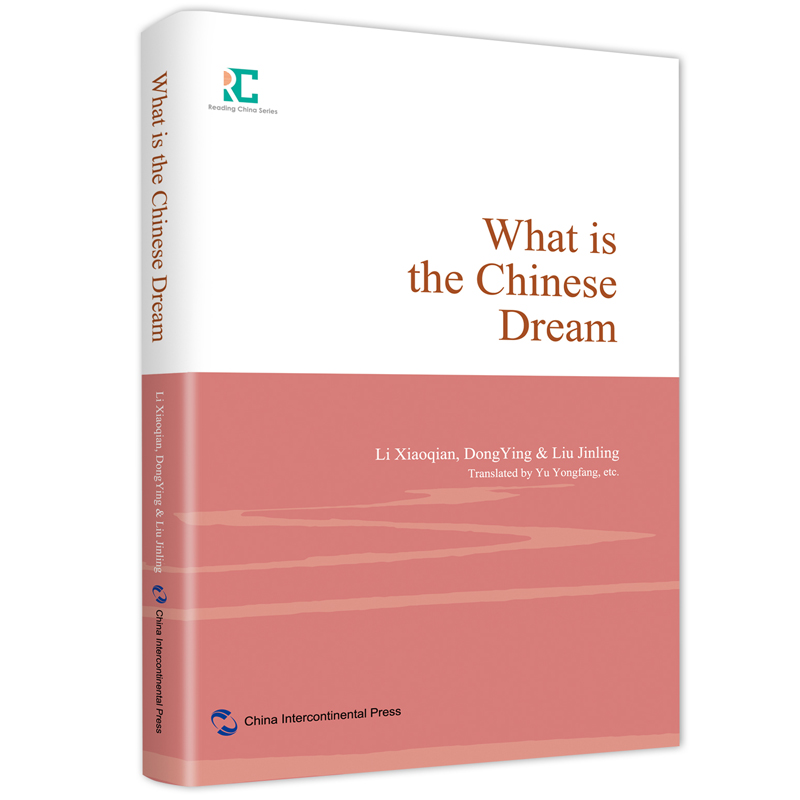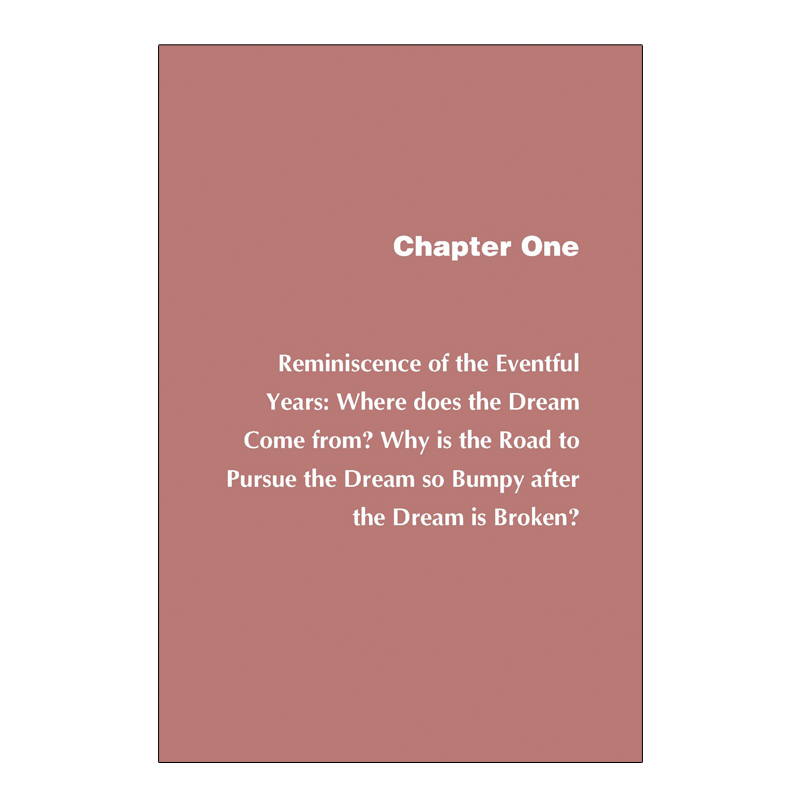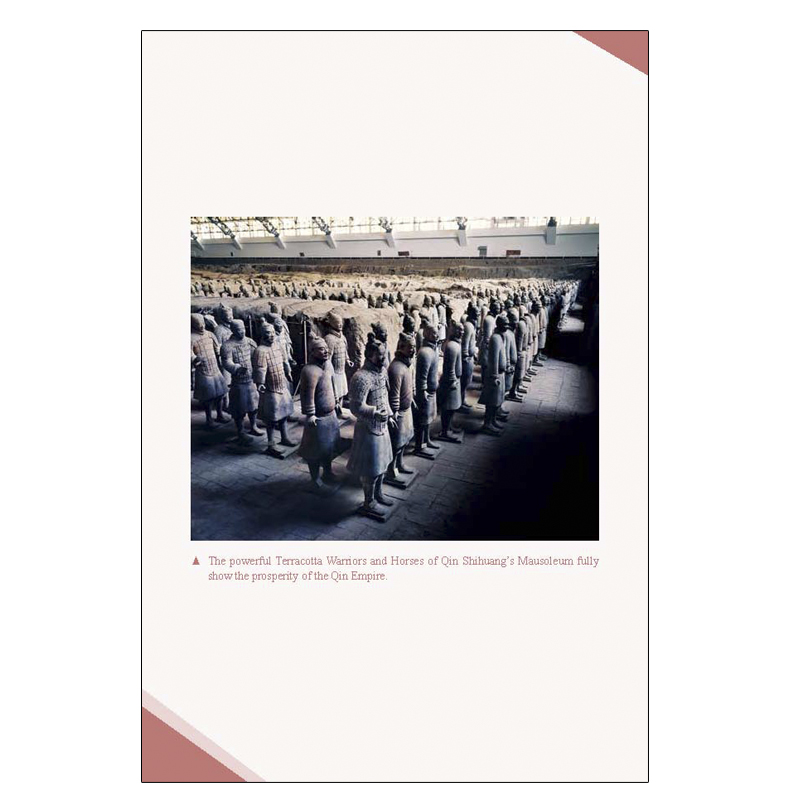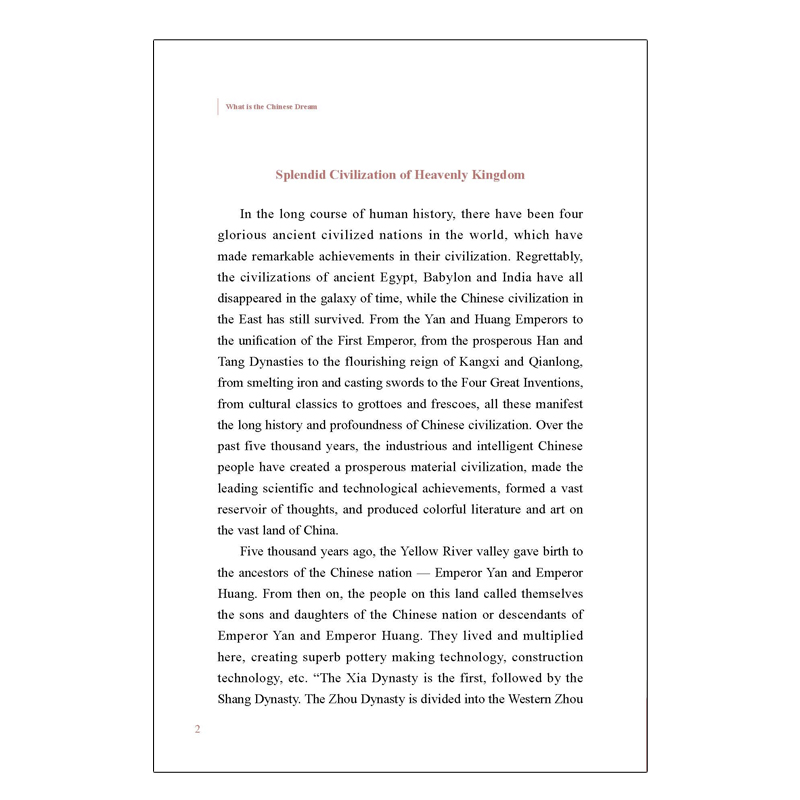
出版社: 五洲传播
原售价: 139.00
折扣价: 83.40
折扣购买: 中国读本丛书-百年沧桑的中国梦:中国梦是怎样的梦想(英)
ISBN: 9787508546650

李晓倩:毕业于北京大学历史系,现任中央党史和文献研究院副研究员,参与多项中央、院及部门重大项目,发表多篇理论与学术文章,具有深厚的史学功底和扎实的写作功底。
In the long course of human history, there have been four glorious ancient civilized nations in the world, which have made remarkable achievements in their civilization. Regrettably, the civilizations of ancient Egypt, Babylon and India have all disappeared in the galaxy of time, while the Chinese civilization in the East has still survived. From the Yan and Huang Emperors to the unification of the First Emperor, from the prosperous Han and Tang Dynasties to the flourishing reign of Kangxi and Qianlong, from smelting iron and casting swords to the Four Great Inventions, from cultural classics to grottoes and frescoes, all these manifest the long history and profoundness of Chinese civilization. Over the past five thousand years, the industrious and intelligent Chinese people have created a prosperous material civilization, made the leading scientific and technological achievements, formed a vast reservoir of thoughts, and produced colorful literature and art on the vast land of China. Five thousand years ago, the Yellow River valley gave birth to the ancestors of the Chinese nation — Emperor Yan and Emperor Huang. From then on, the people on this land called themselves the sons and daughters of the Chinese nation or descendants of Emperor Yan and Emperor Huang. They lived and multiplied here, creating superb pottery making technology, construction technology, etc. “The Xia Dynasty is the first, followed by the Shang Dynasty. The Zhou Dynasty is divided into the Western Zhou and the Eastern Zhou. After the Spring and Autumn Period and the Warring States Period, the Qin Dynasty unified China, followed by the Western Han Dynasty and the Eastern Han Dynasty.” In 221 BC, the first emperor Qin Shihuang united the Central Plains, ending the separation of the vassal states. The Great Wall and Terracotta Warriors and Horses were also created during this period. After more than two thousand years of feudal dynasty alternation, the Han, Tang and Qing dynasties all witnessed a golden age of political integrity and economic prosperity. From the Rule of Wen and Jing to Control by Zhen Guan, to Kaiyuan Flourishing Age, and to the Kangxi-Qianlong Prosperity, the material civilization of China takes a lead in the world. At the China Pavilion at the Shanghai World Expo in 2010, people stopped to appreciate the painting entitled Along the River During the Qingming Festival, which is 128 meters long and 6.5 meters high. This moving painting, created by high and new technology, vividly shows the prosperity of Bianjing, the capital of the Northern Song Dynasty. At the end of the 18th century when Emperor Qianlong (reigned 1735-96) in the Qing Dynasty abdicated, the population of China, food production and industrial output accounted for about a third of the world’s total in the three fields respectively. At that time, there were 10 big cities in the world with a population of more than half a million, of which China had six, namely, Beijing, Nanjing, Yangzhou, Suzhou, Hangzhou, and Guangzhou. “中国读本”丛书,以让世界更好地读懂中国为出发点,重点向国外读者介绍中国道路、中国理论、中国制度和中国实践。


